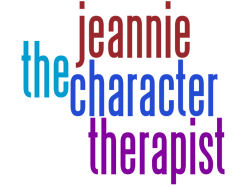|
Most
writers who have been writing for any length of time study the craft.
Alongside our favorite fiction titles we have Swain, Maass, Dixon,
Collins, Browne & King, and Bellcraft books on our shelves.
I suggest you make room for one
more.
The Diagnostic and
Statistical Manual of Mental Disorders (DSM) is the one book
all mental health providers reference when assessing their clients and
making a diagnosis. Published by the American Psychiatry Association,
it is colloquially known as the therapist’s bible.
It’s also the one book you
should have at your fingertips if ever you decide to give your
characters a mental disorder.
For about $74 on Amazon, you can
take a dip in a mental health pool of almost a thousand pages. For
every common disorder, like depression, and lesser-known disorder, like
trichotillomania—Google it, you know you want to—you can find out the
following information to make your characters multidimensional:
1. Diagnostic Features
This section gives writers exactly what they need to know to write
about any disorder. You’ll find a common list of symptoms and how many
symptoms must be present for a diagnosis to be made. You wouldn’t want
your character exhibiting only two symptoms if five are required for a
disorder or syndrome.
2. Subtypes and/or Specifiers
When you have a medical concern, you have a choice of which type of
doctor to see. Doctors can specialize in internal medicine, pediatrics,
family medicine, or anesthesiology. But they are all doctors, sharing
the commonalities of having gone to medical school and completed a
residency. Some disorders can be broken down like this, too. For
example, paranoid schizophrenia is characterized by delusions and
hallucinations, while people with catatonic schizophrenia can be almost
completely immobile or move like a Gumby doll. But both still fall
under schizophrenia because they share certain characteristics.
Specifiers do just what the word
implies: They give additional specifics on a disorder, usually about
the onset or duration. I suppose this would only be useful if you
wanted to be more exact or sound more professional to your readers, if
you were to include a scene where a psychologist tells your protagonist
what his diagnosis is.
3. Associated Features and Disorders
A writer needs to know features that are frequently associated with a
particular disorder to bring it to life on the page. For example, if a
writer births a heroine struggling with bulimia, then it would be
important to include that gradually her teeth enamel begins to erode
and her hair starts to thin. These types of medical or physical
findings make a literary portrayal more realistic, because it spans
across many spectrums.
4. Specific Culture, Age, and Gender Features
Because we write about various cultures and time periods and for adults
and adolescents of all ages, we need to do our research about whether
the disorders we select to inflict upon our characters are appropriate
in these regards. This section will give the particulars you need.
5.
Prevalence
Just how prevalent is Tourette’s disorder in children? What is the
|
likelihood
that a person in an inpatient psychiatric setting would not
have an identified personality disorder? What’s the lifetime
risk
to
develop Dementia Due to Parkinson’s Disease? If you’ve ever wondered
these types of things, you’ll find this section very helpful.
6. Course
The course of any given disorder can vary, but in this section, a
writer will learn the typical lifetime pattern of a disorder. What does
that mean? You’ll learn the typical age range when symptoms first show
up and whether symptoms show abruptly (like PTSD) or gradually (like
Alzheimer’s). You can also find out the typical length of the illness
and how it progresses over time (whether it stays stable, gets worse,
or can improve).
7. Familial Pattern
A writer can learn how common a disorder is among first-degree
relatives. If your hero’s father had narcissism, how much more likely
would your hero have it?
8. Differential Diagnosis
Utilizing this section might be useful if you ever decide to do the ol’
switcheroo on your reader. What if one of your characters exhibits
depressive symptoms, and your reader believes it to be personal, but
then later learns that her symptoms are due to the medical condition of
hypothyroidism? Symptoms can sometimes overlap but have very distinct
origins.
Conclusion
You might not want to spend $74 for all this information, and that I
can understand. You can find all the diagnostic features (Section 1)
for each disorder on the Internet. For instance, if you wanted to find
out about the depressive disorder cyclothymia, you could do a search
for “cyclothymia DSM criteria.”
Should you decide to buy the
book, be aware that an updated version is coming out in 2012. Currently
DSM is in a
text-revised 4th edition (DSM-IV-TR). The next
edition, DSM-V, will include information gathered
from ongoing studies that change the face of mental disorders. New
diagnoses will emerge while some disorders will be absorbed into
something else. Outdated versions of DSM aren’t
good for anything more than a fascinating read to see how far science
and culture have come.
As a Christian counselor, I
always say the Bible and DSM are the only two books
I need. As a writer I’d say the exact same thing. We write about
people, and research shows that one in every twenty-five individuals
has a mental disorder. So to have the type of information above
consolidated into one source would be essential for any writer.


|